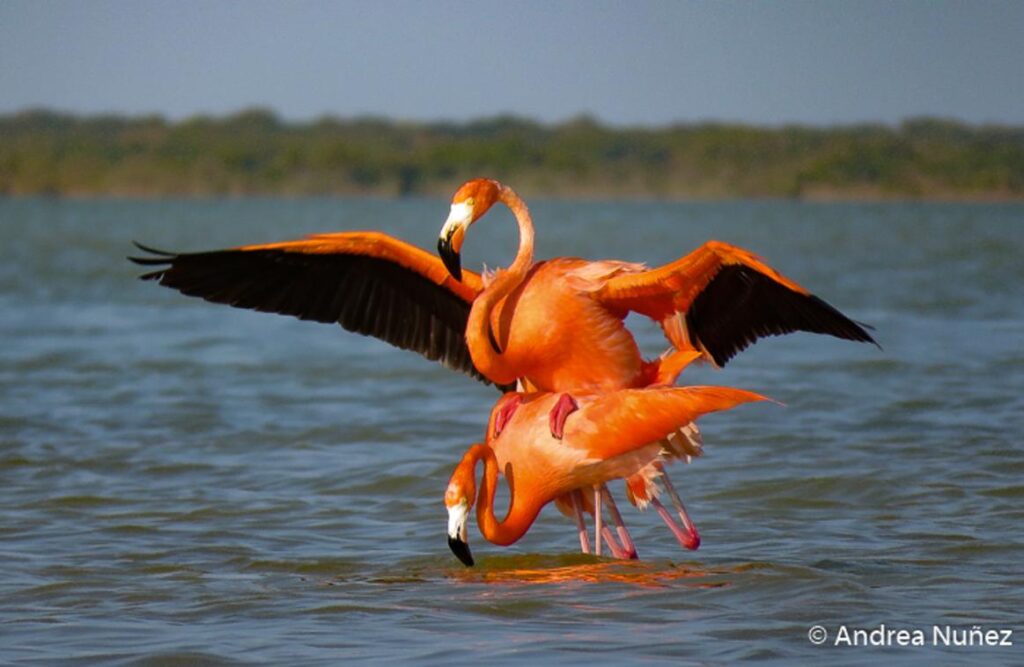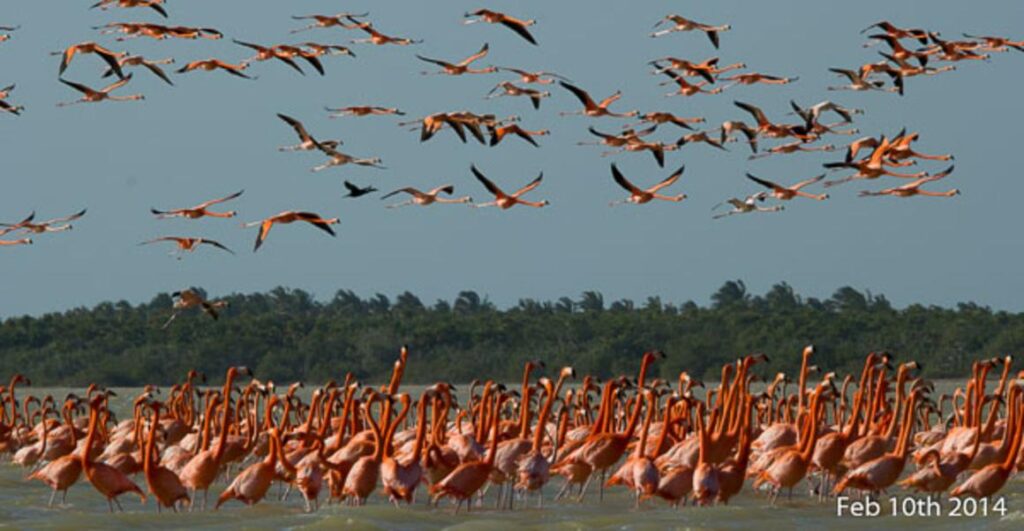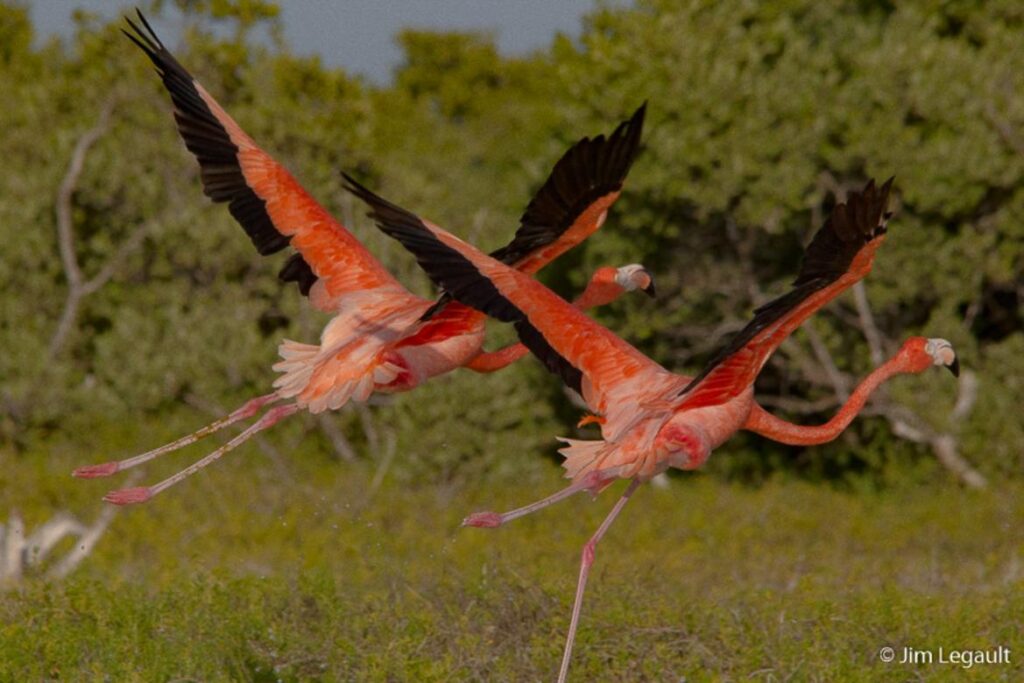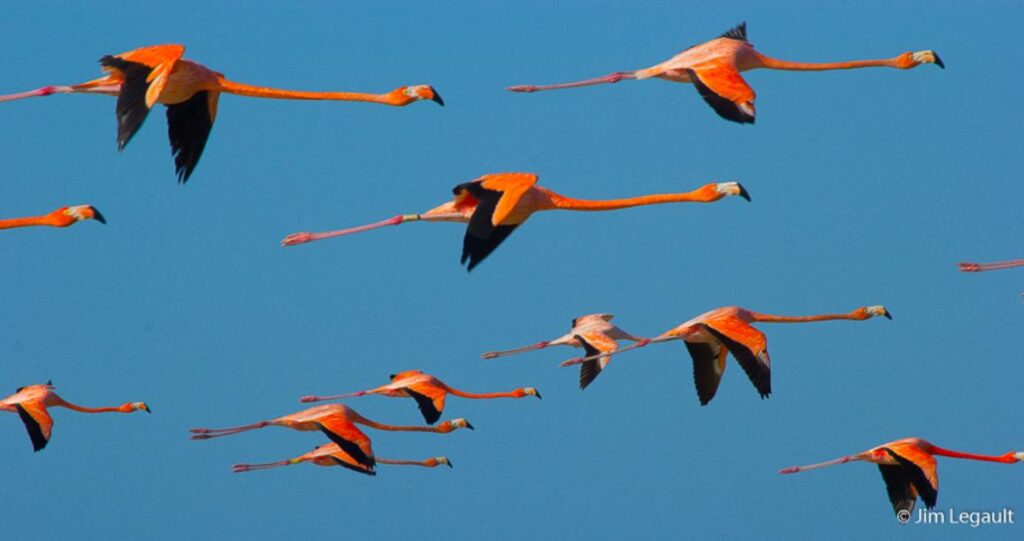Flamingos in the Ria Lagartos Bio Reserve
The Yucatan’s flock of Flamingos (Phoenicopterus ruber ruber-American Flamingo ) is estimated at 40,000 and there are always Flamingos in the Ria Lagartos Biosphere Reserve.The bio reserve is especially suited for flamingos because of the highly saline water.High salinity is favorable for their prefered diet of brine shrimp(artemia).The feeding and nesting grounds are distant from the only entrance in the estuary to the Gulf of Mexico. The distance to the opening increases the salinity via evaporation and this is the reason for large quantites of artemia and the salt production that has occured here continually since the classic Mayan period at least.
A Flamingo Video shot in the first few days of May at the peak of Flamingo Mating season LINK





Flamingo Facts
Also known as:American flamingo
Synonyms:Phoenicopterus ruber ruber
Kingdom Animalia
Phylum Chordata
Class Aves
Order Phoenicopteriformes
Family Phoenicopteridae
Genus Phoenicopterus
Size
Height: 120-145 cm
Male weight: 2.8 kg
Female weight: 2.2 kg
Status
Classified as Least Concern (LC) on the IUCN Red List and listed on Appendix II of CITES
Description
With its brilliant pinkish-red plumage, long slender legs, and remarkably thin, flexible neck, the Caribbean flamingo is one of the most world’s most distinctive birds. Together with the greater flamingo, it shares the title for the longest limbs relative to body size of any bird. The legs are pink and, being a wading bird, the front three toes are webbed. The bill has a characteristic downward bend, and is pale-yellow at the base, pink to orange in the middle, and black at the tip . Until 2002, the Caribbean flamingo was considered conspecific with the greater flamingo (Phoenicopterus roseus), found in Europe, Africa, and Asia (. While both species are of a similar size, the greater flamingo has much paler plumage than the Caribbean flamingo .
Range
The Caribbean flamingo occurs on the north coast of South America, the Yucatan Peninsula in Mexico, and a number of Caribbean islands. In addition, there is a small, isolated population on the Galapagos Islands .
Habitat
Found in a wide variety of saline and freshwater habitat such as lagoons, estuaries, mud flats, and coastal or inland lakes .
Biology
Whereas smaller flamingos and other wading birds are restricted to the shallows, the Caribbean flamingo’s great size enables it to wade out into relatively deep water. It rarely takes food from the surface, but instead generally feeds with its whole head submerged underwater. With its bill held only slightly open, it filters out food particles by allowing water to pass across rows of tiny comb-like plates on the bill’s edges (4). Utilising this specialized technique it is able to obtain huge quantities of the crustaceans, molluscs, aquatic insects, polychaete worms, and algae on which it depends. It is the presence of certain carotenoids in the algae and crustaceans that give the flamingo its distinctively coloured plumage .
The Caribbean flamingo is a highly social species, with colonies ranging in size from just a few dozen to hundreds of thousands of individual birds during the breeding season . Group courtship displays are typical of this flamingo, with thousands of individuals raising their wings, turning their heads, or bowing their necks in spectacular synchrony. Engaging in these displays ensures that all members of the colony are ready to mate at the same time . Both sexes are involved in building the nest from bits of mud piled into a smooth cone, and spaced just beyond pecking distance of other pairs’ nests. Usually just a single egg is laid, which is incubated by both parents over 27 to 31 days . Around six to eight days after hatching, the chicks leave the nests and gather in large crèches, overseen by a small number of adults, and eventually fledge at around 9 to 13 weeks .
Although the Caribbean flamingo is generally considered to be non-migratory, it is extremely nomadic, and will travel hundreds of kilometres in response to shifting resources . Large flocks form long, curving lines in flight, with each bird flying with its neck and legs distinctively outstretched .
Threats
Development, human disturbance, and habitat loss threatens the coastal Caribbean wetlands on which the Caribbean flamingo depends . Fortunately however, its population remains very large and is actually believed to be increasing overall .
Conservation
In 2007, a network of in-situ and ex-situ conservation initiatives was established by the Caribbean Alliance for Flamingo Research and Conservation, to ensure the protection and conservation of the Caribbean flamingo . This includes a range of research and conservation activities coordinated across several countries that fall within the species’ range .